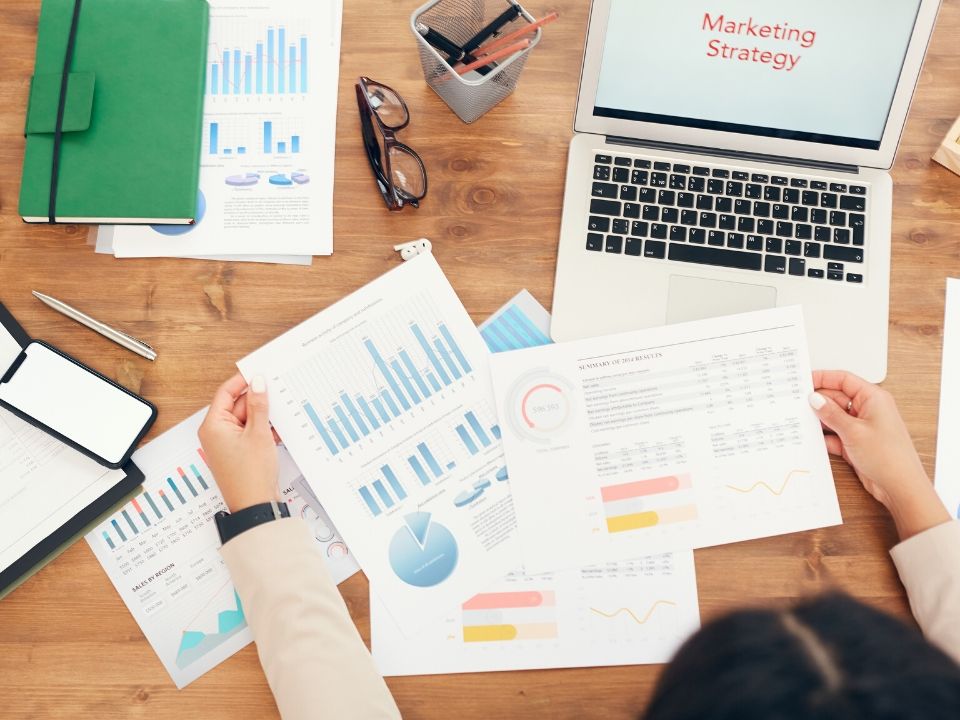Hello!
There is no escaping the fact that every business needs an advertising plan. Regardless of your product or service, advertising is how you promote your business to your intended audience – which in turn justifies the fact that advertising is such a crucial spearhead of any marketing strategy.
Even with the professional help of experienced agencies, forming a concise, optimal advertising plan can be a positively daunting process. Fortunately, proper research can minimize the risk of missteps and set you on the right course - read on to find out how to get started, step by step.
Defining advertising plans
Advertising is likely a very familiar, simple concept – it is a form of marketing that businesses and companies use to make their products and services known to potential customers.
 After the initial challenge of creating advertising material, an arguably bigger challenge emerges in the form of advertisement distribution. To ensure positive ROI and optimal lead generation, businesses and companies need to establish an optimal advertising plan within their budget that satisfies these criteria.
After the initial challenge of creating advertising material, an arguably bigger challenge emerges in the form of advertisement distribution. To ensure positive ROI and optimal lead generation, businesses and companies need to establish an optimal advertising plan within their budget that satisfies these criteria.
It is noteworthy that initial plan results can then be used as benchmarks against which strategy effectiveness can be assessed; the data they yield can be invaluable towards course corrections. Furthermore, establishing an advertising plan for the first time will lay out significant groundwork, providing a blueprint for subsequent campaigns and hastening the process.
Creating your paid advertising plan
 Planning out a paid advertising plan for your business must begin with your business plan, which will influence how you proceed while staying within your budget.
Planning out a paid advertising plan for your business must begin with your business plan, which will influence how you proceed while staying within your budget.
Your business plan should include metrics and defined goals that will be invaluable in this process, such as:
- Your target audience
- Your advertising budget
- Optimal advertising platforms
- Your marketing message focus – the advertising content itself
- Financial goals – marketing and revenue goals
With this information in hand, you will be better equipped to craft your advertising plan in an optimal manner. This key information will immediately be put to use below.
Define your goal and act on it
As with all paid marketing endeavors, a paid advertising plan comes with a varying, but still considerable, cost. It is thus beneficial to begin with your goal in mind, to ensure that your Budget is best utilized to meet your goals – that is how any ad campaign’s success is measured, after all.
Your goals will highly depend on your business as well as your industry - movers need leads all the time, for example, but the same may not be equally true for all industries. Your ad campaign may indeed primarily be centered on generating awareness, which could translate to increased lead generation, or it might intend to regain lost leads. It might be optimal to focus on lead conversion rates instead – your ad campaign’s focus can vary significantly, and it must depend on your intended outcome.
Set your advertising plan budget
Directly tied to the above, your business plan and criteria will best define your optimal budget. At this point, you should determine how much advertising is really worth to your business, and thus how much of your budget you should devote to it.
Working towards this step, you should consider such factors of your business as:
● Lead generation, retention, and conversion value
● Customer lifetime value
● Potential overhead
● Annual revenue goals
If you already have advertising ideas of your own, it would be important to weigh their potential value against their potential cost. Agencies can naturally provide professional guidance in this front and help you set realistic ROI expectations, but your own insight into your business is a primary factor in setting your budget.
Define your audience and media selection criteria
Having established your goal and budget, the next aspect of advertising you should consider is, simply, who you are targeting and how you are reaching them. Increasing sales requires careful consideration of your customers’ characteristics and how your channels are best suited to reach them. Therefore, you will need to clearly outline buyer personas, and choose a medium that is optimal for them, as well as for your budget.
 At this point, you are likely well aware of your intended audience, and so is your media planning agency. Reconsider and re-evaluate your intended audience if your metrics show you may need to, and adjust your choice of medium accordingly. Your advertising medium of choice may be any of the following, and the effectiveness of each will vary based on your business plan:
At this point, you are likely well aware of your intended audience, and so is your media planning agency. Reconsider and re-evaluate your intended audience if your metrics show you may need to, and adjust your choice of medium accordingly. Your advertising medium of choice may be any of the following, and the effectiveness of each will vary based on your business plan:
● Email
● Digital marketing
● TV and radio
● Print
Apart from considering how well each of those options is suited for your target audience, you should consider potential production limitations in your marketing team. Content creation demands, such as animated or static banner ads, gifs, video content, and print concepts can all overburden your team and thus strain your budget.
Your customers themselves will not hesitate to provide feedback if asked, so it’s best that you don’t miss the opportunity to do so as well. They can map out their consideration process, solution evaluation criteria, preferred media consumption, and engagement levels with different marketing materials. This can provide insight that can push your marketing efforts in the right direction.
Diversify your media
 Budget permitting, it is ideal to diversify your advertising channels. A single medium may induce ad fatigue and thus have reduced effectiveness, and a single-channel strategy on its own may fail. Employing various forms of media can prevent both of those shortcomings and increase the likelihood that your ad campaign yields positive results.
Budget permitting, it is ideal to diversify your advertising channels. A single medium may induce ad fatigue and thus have reduced effectiveness, and a single-channel strategy on its own may fail. Employing various forms of media can prevent both of those shortcomings and increase the likelihood that your ad campaign yields positive results.
Should one of your channels produce suboptimal results, having more active channels ensures you still have ways of reaching your audience. An omnichannel ad campaign can reach your audience with multiple touchpoints, and thus maximize the effectiveness of your campaign. Of course, this approach is more costly than more limited or local ad campaigns, so you will need to, again, weigh your budget against the value of your advertising plan.
Perform a SWOT analysis and use its results
 The SWOT acronym simply stands for the 4 key points of your business: strengths, weaknesses, opportunities, and threats. This strategic planning technique is a great tool for analyzing those four aspects of your business, and thus inform how your paid advertising plan should best be planned.
The SWOT acronym simply stands for the 4 key points of your business: strengths, weaknesses, opportunities, and threats. This strategic planning technique is a great tool for analyzing those four aspects of your business, and thus inform how your paid advertising plan should best be planned.
A SWOT analysis will highlight your business’s core competency and seasonal or other opportunities, as well as potential threats by competitors who may outmaneuver you and hinder your business.
Using this insight, you can better define your business against your competitors – your key differentiators, in other words. You can then pinpoint those mismatches, letting your differentiators inform your advertising plan - it may be ideal to promote your lower prices or higher product quality, for instance, depending on the results of your SWOT analysis.
Launch your advertising
Far from the final step, at this point you should be ready to produce and launch your advertising. Use all the insight you have gathered so far and all the plans you’ve made to follow through on your ideas and put them to use – with unwavering consistency.
Especially if you have indeed opted for an omnichannel strategy, your multi-faceted campaign should remain absolutely consistent in all of its expressions. Ensure that potential re-branding remnants, such as old product or business names on social media profiles, have been removed completely, as your presence across all media should be identical. Take great care to keep messaging diversity to an absolute minimum; it is fine for cross-media ads to be different aesthetically, but their core message should be consistent. This will significantly increase the effectiveness of your advertising efforts since your customers will be exposed to a consistent message.
Analyze your advertising plan strategy
Marketing efforts do not conclude after your campaign is launched, by any means; it is wise to continuously monitor, measure, and assess the effectiveness of your campaign. Marketing is indeed an ongoing process, and your advertising plan’s success hinges on how you handle its results.
It is best to constantly track the results of each of your strategies and analyze them as they come in. Using these insights you can then reassess your course, and set the groundwork for follow-up or future campaigns.
 Your primary concerns in this final stage will be advertising effectiveness and ROI. It is thus in your best interest to monitor advertising effectiveness through a variety of metrics, such as:
Your primary concerns in this final stage will be advertising effectiveness and ROI. It is thus in your best interest to monitor advertising effectiveness through a variety of metrics, such as:
● Total customer acquisition, and individual marketing tactic results
● Customer behavior – engagement, individual purchases, and recurring purchases
● Existing customer retention
● Individual marketing tactic results – which attracted the most and which the fewest customers
● Secondary goals – industry connections, image-building, news coverage, and others
ROI is equally vital, so the cost of your efforts should be measured against the results – and thus also inform the future.
 Factors to analyze may include the following:
Factors to analyze may include the following:
● Total cost and individual marketing tactic cost
● Total results and individual marketing tactic results
● Comparing cost to results – a positive ROI would entail that the increase in sales exceeded the advertising cost
● Effectiveness of each form of advertising
● Future affordability of each advertising tactic used
Also read:
- Reasons for Getting PBN Links and Smart Tips on How to Do It
- How to Create an Email Signature in 2025
- How Businesses Can Get Maximum Benefit from Data Enrichment
Planning out the best Paid Advertising Plan for your business
Analyzing your results in these terms will equip you with invaluable insight into future campaigns. If any individual part of your advertising campaign fails to meet your goals, you will know to tweak your tactics or try new ones, instead of opting for ones that have been proven to be suboptimal. Likewise, knowing which forms of advertising yield the best ROI for your business will let you make informed decisions on where to focus your marketing budget, making the most out of your advertising plans and maximizing their outcomes.
Thank you!
Subscribe to our newsletter! Join us on social networks!
See you!






